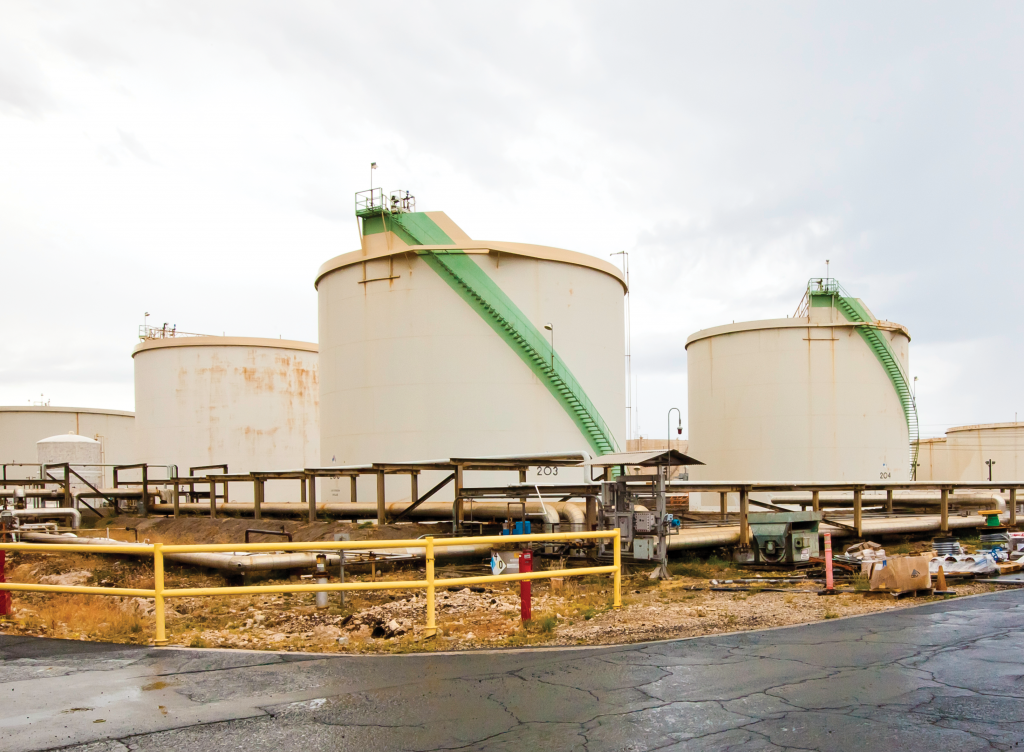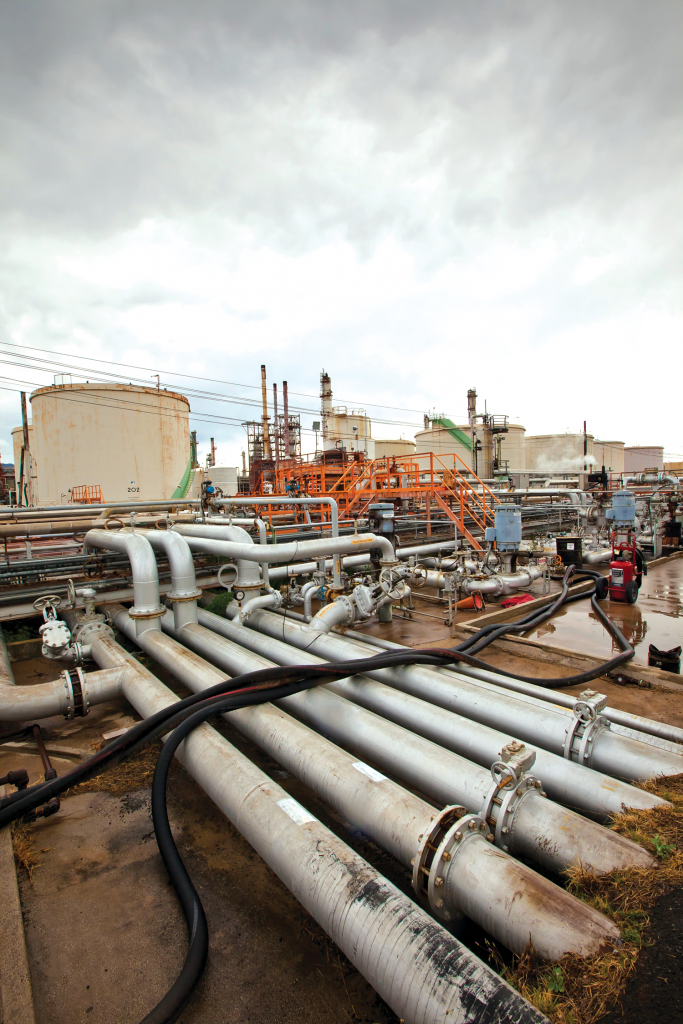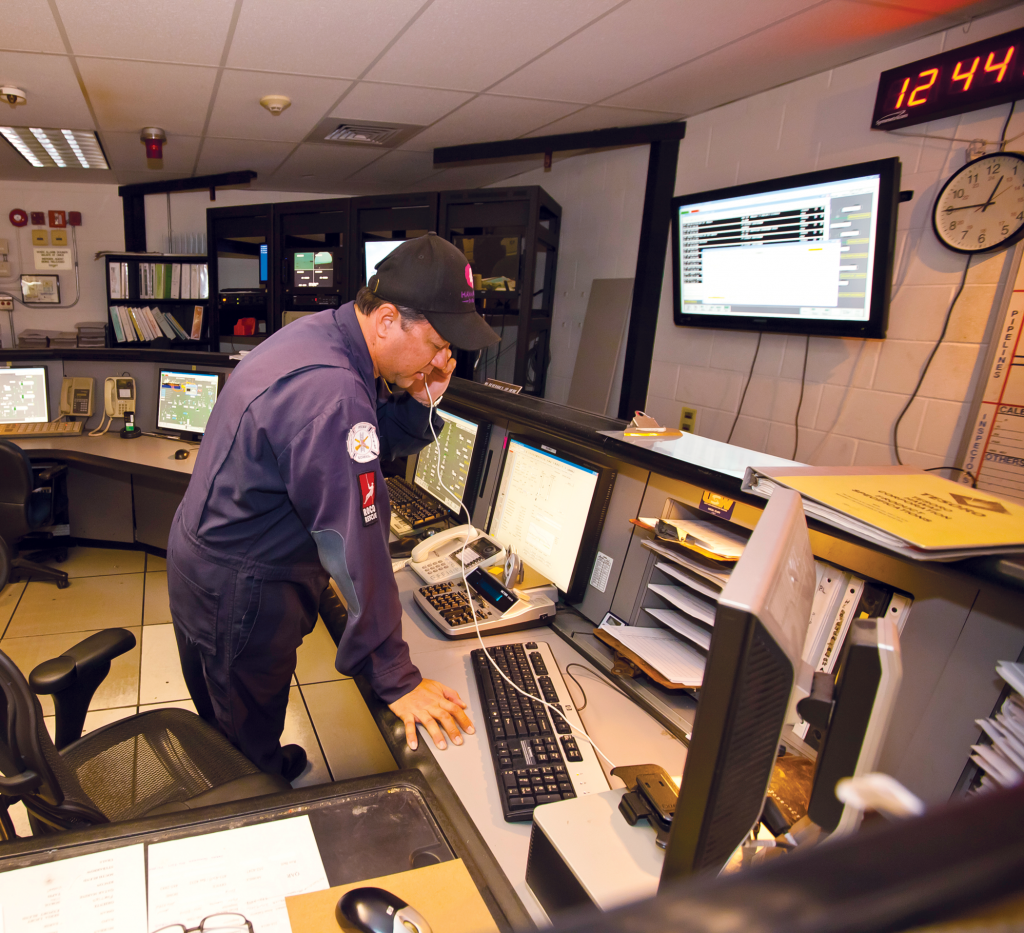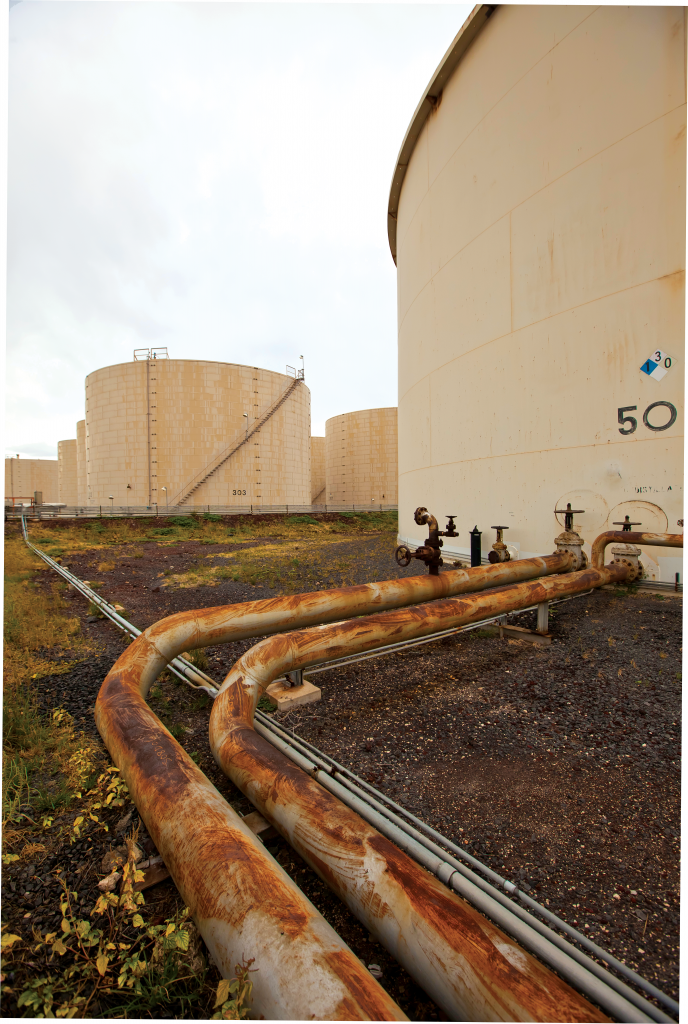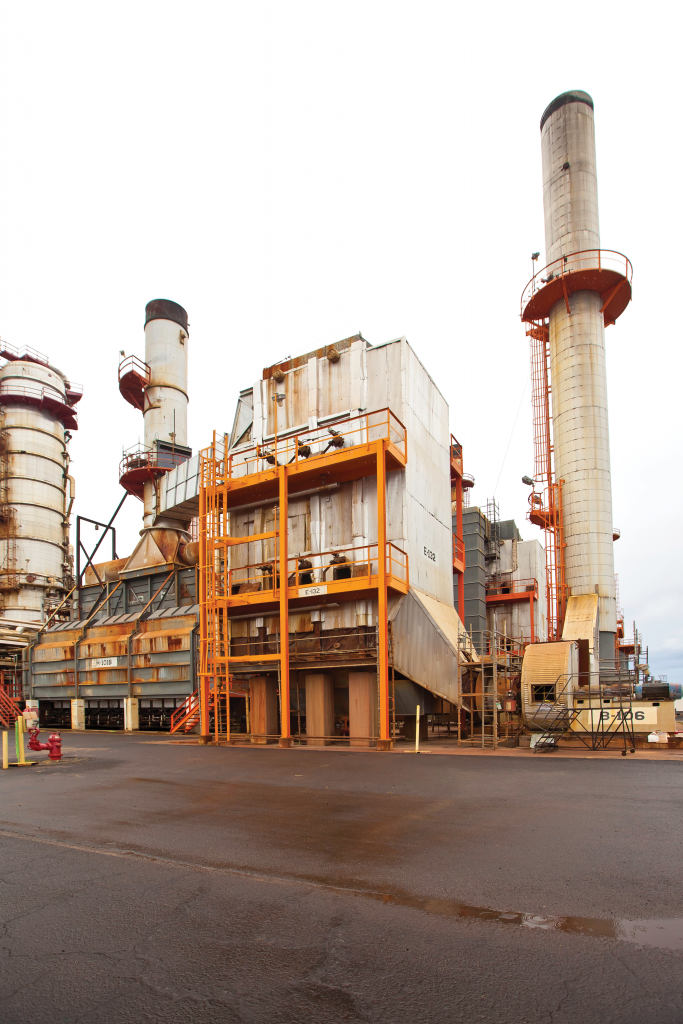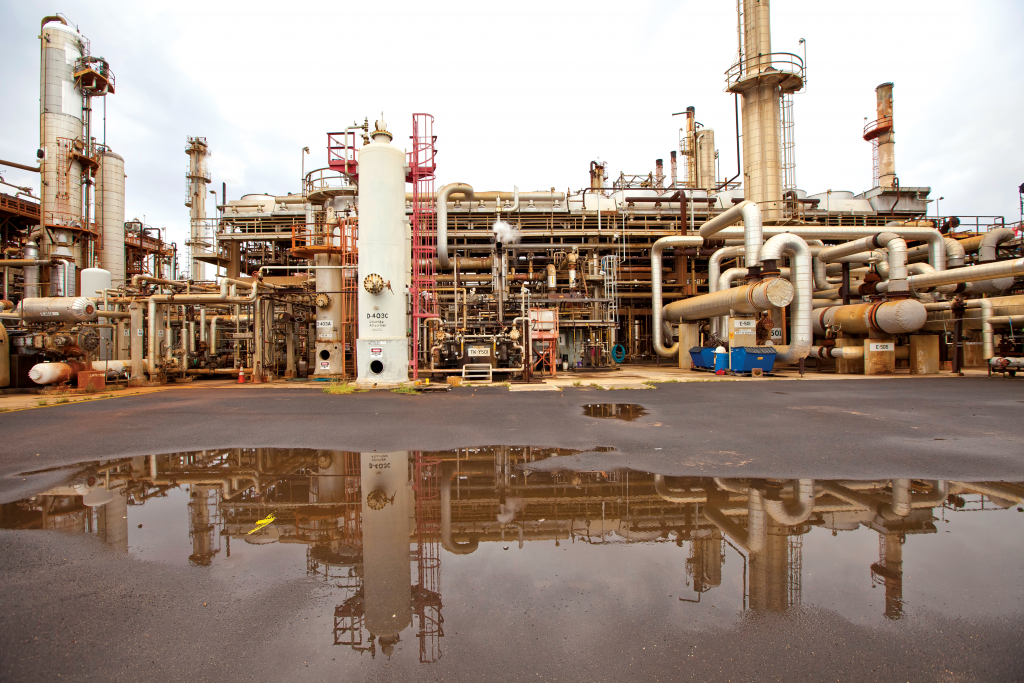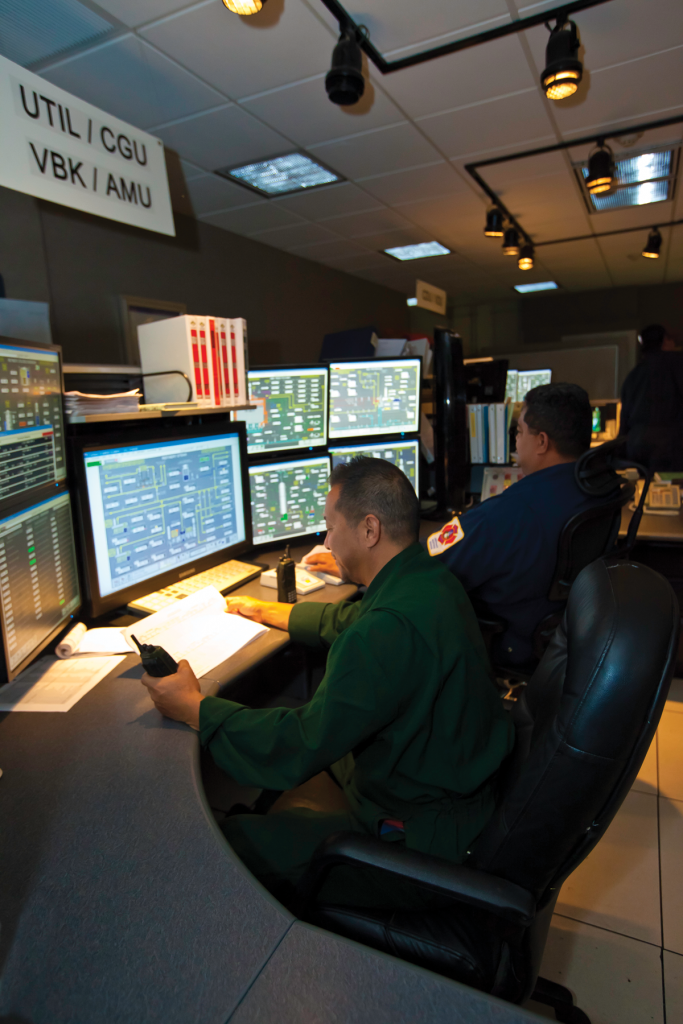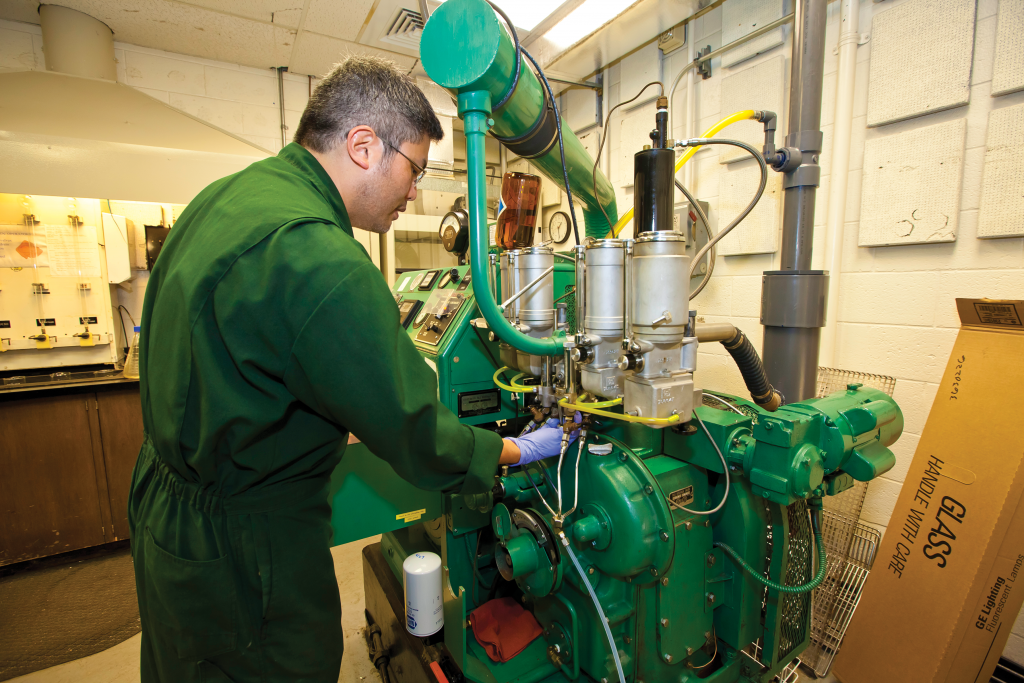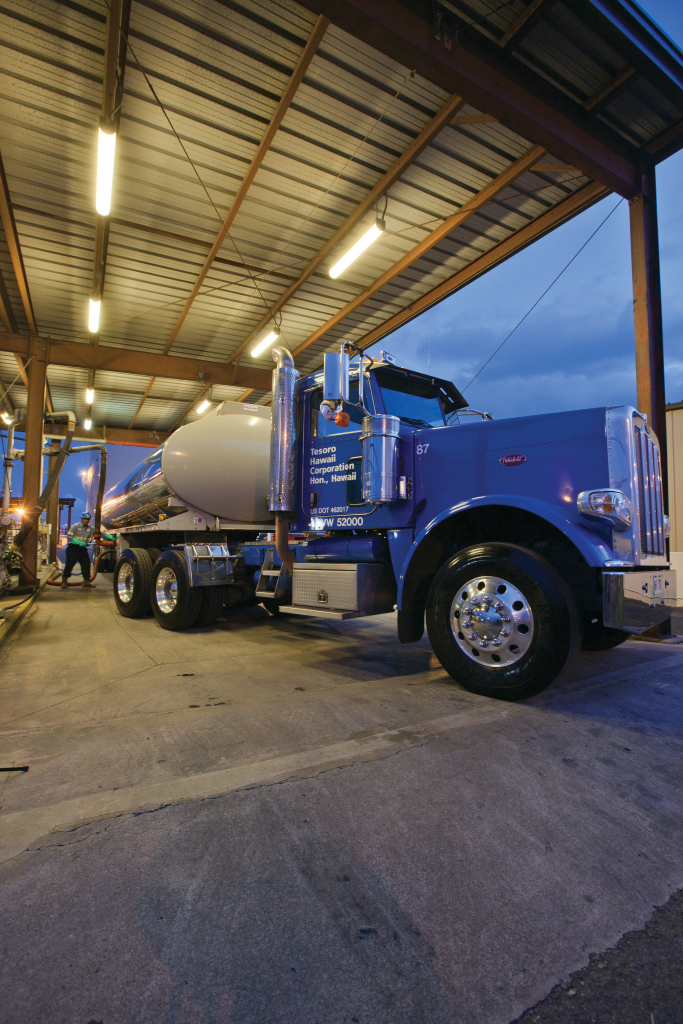Tesoro Hawaii Transforms Oil into Fuel
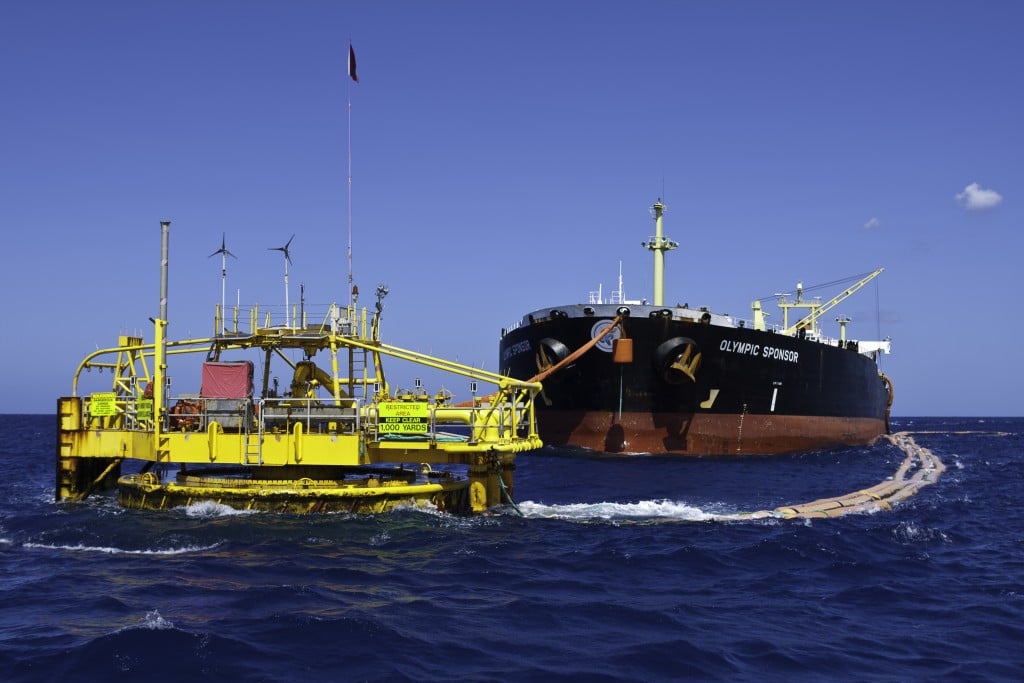
About 40 million barrels of oil are delivered by tanker to Hawaii every year and transformed into a host of products: gasoline, jet fuel, asphalt, diesel and more. These photographs trace the process of refining oil, which – even in this era of alternative energy – continues to be Hawaii’s main source of energy.
OIL ARRIVES
Tankers like the Greek-registered Olympic Sponsor – which delivered the maximum of 1 million barrels of crude oil allowed by the U.S. Coast Guard – don’t pull into a harbor when they unload in Hawaii. Instead, a local pilot will board the tanker and guide it to a yellow mooring anchored in 100 feet of water, a mile-and-a-half off Barbers Point.
The tanker’s pumps send crude oil through three 840-foot tubes to the mooring, where it is transferred to underwater pipes that carry the crude to Tesoro’s refinery (Chevron also has a refinery). Crews on tugboats control the equipment and keep the tanker steady.
Between 55 and 95 tankers come to Hawaii each year and each has 48 hours to unload.
TANK FARM
The tank farm (part of it shown) is both the entrance and the exit to the 200-acre Tesoro refinery in Campbell Industrial Park. Here, crude oil and finished products are stored before and after refining. Six out of the 70 tanks are filled with crude; the largest is 60 feet tall and holds more than 60 million gallons.
It takes seven to 10 days to refine a tanker load of crude, depending on the reserve supply and the time between tanker deliveries. During the process, refined products such as gasoline and diesel are stored in tanks until they are tested in the laboratory and OK’d for shipment.
Paul Stover, lead distribution operator for Tesoro, monitors tank levels and pump status as the offshore mooring unloads crude from a tanker to the refinery. The distribution control room is responsible for oil movements – anything coming in and out of the refinery’s tank farm.
LOTS OF STORAGE
High-octane gasoline is stored in the tank at right. Lighter products, such as gasoline, are stored in floating-rooftop tanks – a safety feature in which the roof rises or falls with the level of the fluid to better contain vapors. Product tanks are smaller than crude tanks, while fuel oil is held in tanks with wider diameters. Each tank is outfitted with systems that detect overflow and surrounded by a berm or protective barriers. They are designed to withstand winds of up to 120 mph.
BREAKING CRUDE
Refining begins by separating the crude into its components. The Crude Distillation Tower, boils crude into five or six different vapors. These vapors are collected in the Atmospheric Crude Tower, below left. The ACT distills each component into four different groups based on their boiling points:
- Naphtha, used to make gasoline;
- Kerosene, which creates jet fuel;
- Diesel, used for fishing boats, construction equipment and some cars and trucks;
- Heavier residuals that help produce low-sulfur fuel oil for electric power plants.
As the vapors rise through the tower, they are cooled at various temperatures and ultimately return to a liquid state. Each fluid is then piped to units in the refinery to finish its processing and is tested in the laboratory. Some fluids, for example, are sent to the Light Ends Recovery Unit, where “light” products such as propane, butane, pentane and hexane are created.
DISTILLATION
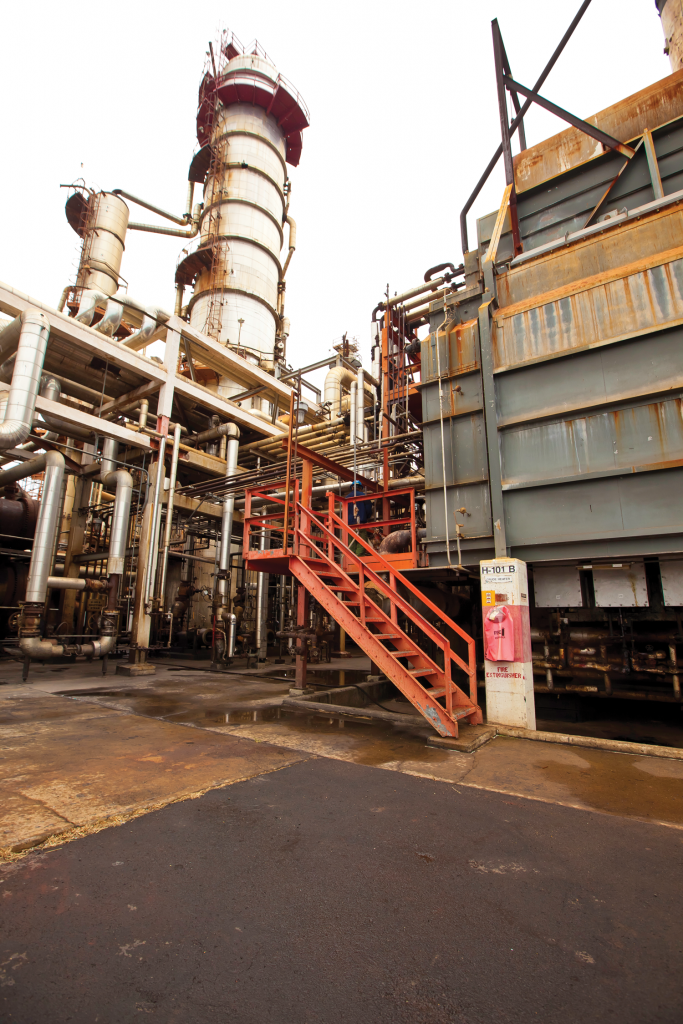 The heaviest residuals separated in the ACT (at right), such as gas oil, are not suited for many products on their own. These products are transferred to the Distillate Hydrocracker (below right). During the hydrocracking process, impurities such as sulfur and nitrogen are removed and transferred to the Sulfur Recovery Unit (not shown). Tesoro says it recovers 99 percent of the elemental sulfur, and pelletizes and sells it to the Mainland for fertilizer.
The heaviest residuals separated in the ACT (at right), such as gas oil, are not suited for many products on their own. These products are transferred to the Distillate Hydrocracker (below right). During the hydrocracking process, impurities such as sulfur and nitrogen are removed and transferred to the Sulfur Recovery Unit (not shown). Tesoro says it recovers 99 percent of the elemental sulfur, and pelletizes and sells it to the Mainland for fertilizer.
In the Hydrocracker, hydrogen is pumped into the oil. The mixture is heated to 750 degrees Fahrenheit and compressed with 1,800 pounds per square inch of pressure that breaks or “cracks” the big molecules into smaller ones, creating gasoline, jet fuel and diesel.
The three reactor vessels on the Hydrocracker are made of 5-inch-thick steel and each weighs 350 tons.
The heaviest residuals separated in the ACT (at right), such as gas oil, are not suited for many products on their own. These products are transferred to the Distillate Hydrocracker (below right). During the hydrocracking process, impurities such as sulfur and nitrogen are removed and transferred to the Sulfur Recovery Unit (not shown). Tesoro says it recovers 99 percent of the elemental sulfur, and pelletizes and sells it to the Mainland for fertilizer.
In the Hydrocracker, hydrogen is pumped into the oil. The mixture is heated to 750 degrees Fahrenheit and compressed with 1,800 pounds per square inch of pressure that breaks or “cracks” the big molecules into smaller ones, creating gasoline, jet fuel and diesel.
The three reactor vessels on the Hydrocracker are made of 5-inch-thick steel and each weighs 350 tons.
CONTROL ROOM
Operators in the process control room monitor and control the computers that operate each unit at the refinery. James Yocom (right) runs the board for the Hydrocracker and has been working with Tesoro for 25 years.
TESTING
Ryan Kunishima, one of three laboratory technicians at Tesoro who test materials, uses an octane machine. When testing octane levels, pressure is increased until the machine’s engine makes a knocking sound.
Crude is tested when it comes into the refinery and a sample of each refined substance goes through six to eight tests before the products are shipped.
ASTM International, formerly known as the American Society of Testing Materials, specifies the tests for gasoline while some other tests are conducted for environmental reasons mandated by the state.
FUELING TERMINAL
Alan Lopes, a driver trainer and dispatcher who has been with Tesoro for 10 years, loads a tanker truck at the company’s Sand Island terminal, also known as the harbor terminal. From here, drivers deliver to gas stations and fueling locations across Oahu. Other refined products go to distribution sites such as Barbers Point Harbor, where products are transferred to barges bound for the Neighbor Islands. Tesoro also ships through pipelines to the airport.
